Aphrodisiac Superherb:
Turnera
Articles > Pepennials > Turnera ulmifolia
By Alex Butova, the Witch of Herbs and CatsAlexandra Butova is our columnist, journalist, and photographer, living in Riga, Latvia. She has has been with TopTropicals since Day One (2002), writing about magic plants, travel, and of course cats - from the CatNation she belongs to. Alex is in charge of TopTropicals.ru website.
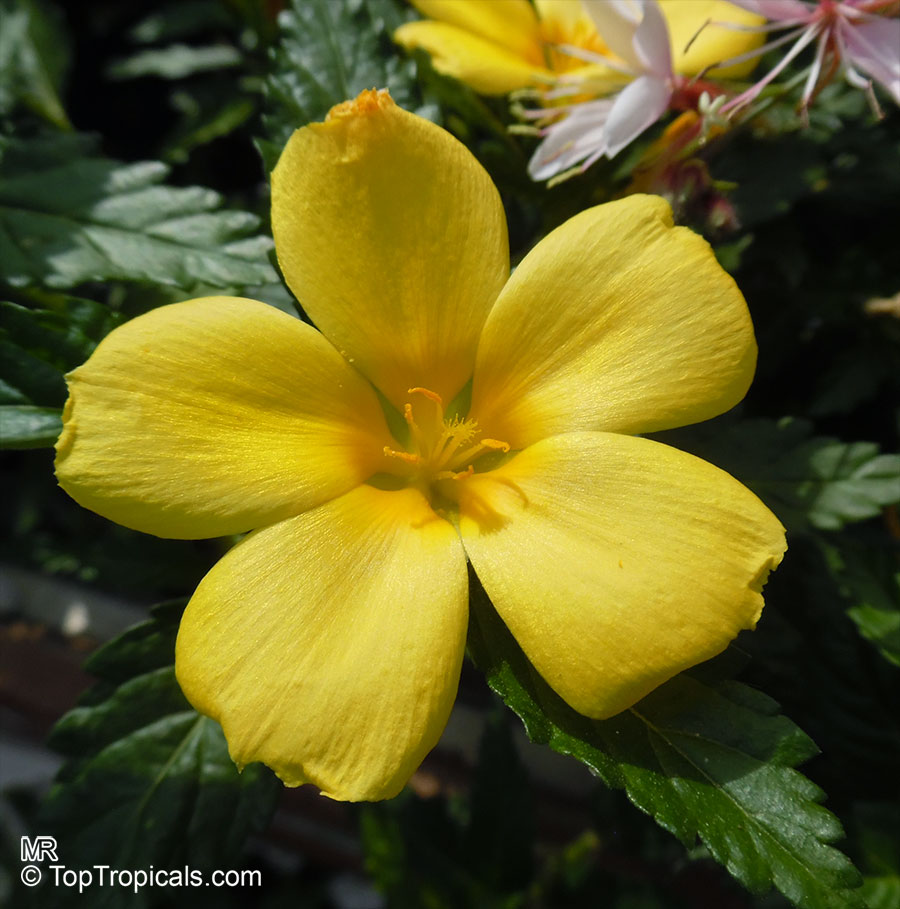
What makes a love potion?
This plant has been a much wanted herb for the last decade due to its magic, special properties... The plant is Turnera, or Damiana, the newest superplant to attract attention among the wellness-minded set.
Turnera has many common names: Yellow Alder, West Indian Holly, Sage Rose… But it is not a true Alder, nor Holly, nor Sage, nor Rose! It is aplantin family Turneracea. It is native toMexicoand theWest Indies and dates back to Mayan civilizations. Liqueur Damiana Guaycura, is actually named for the native inhabitants of southern Baja, who incorporated this plant into their rituals.
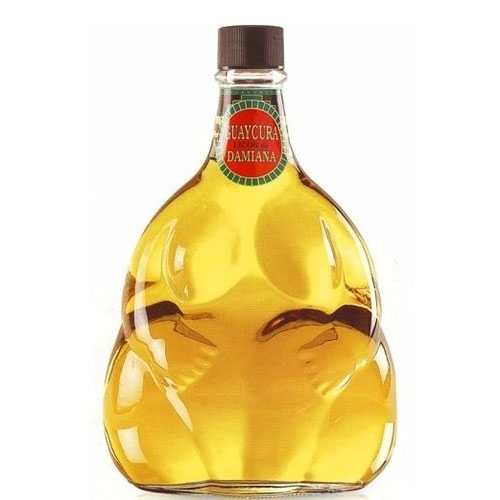
Other popular English common names are Yellow Buttercup and Sundrops. Nowadays it is widely naturalized in many subtropical countries. Often it has escaped from cultivation, becoming widely naturalized in tropical and subtropical regions. The plant has long had a reputation for being a libido booster. Today it's everywhere from Walmart to your local juice shop, in teas, tinctures, extracts, and, as you can see - booze.
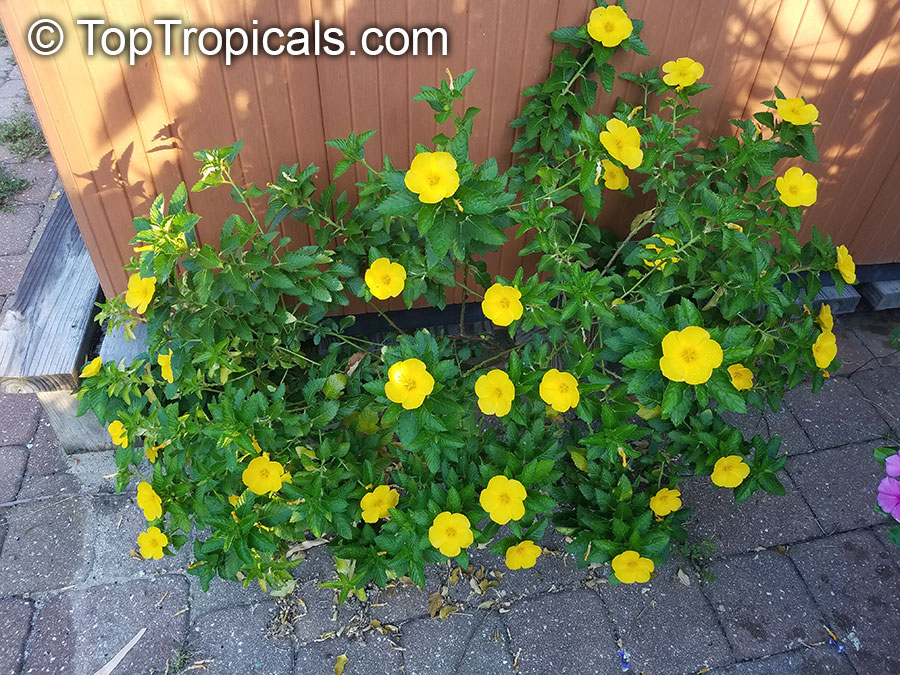
It is small evergreen erect shrub thatgrows up to only 3ft tall, with dark toothed slightly fragrant leaves and daisy-like, yellow flowers that are slightly fragrant. The flowers bloom around 6:00 AM and wilt around 11:30 AM. Life span for flower is around 6 hours only, and…new flowers open the next morning, day by day, and every day! The bright flowers attract gazillions of butterflies and other pollinators. It is valued as a landscape plant for flower beds and ground covers, because it is so undemanding and yet fast growing, and - cheerfully everblooming!
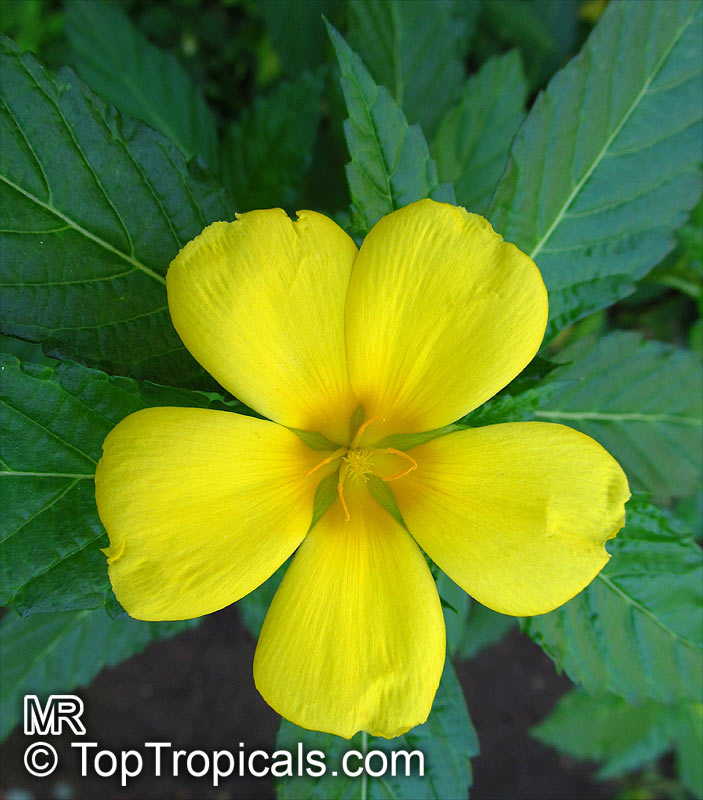
White flowered variety - Turnera subulata Key West, White Buttercup is very similar but has white flowers with black-and-yellow centers. Both plants are expremely showy in the landscape.
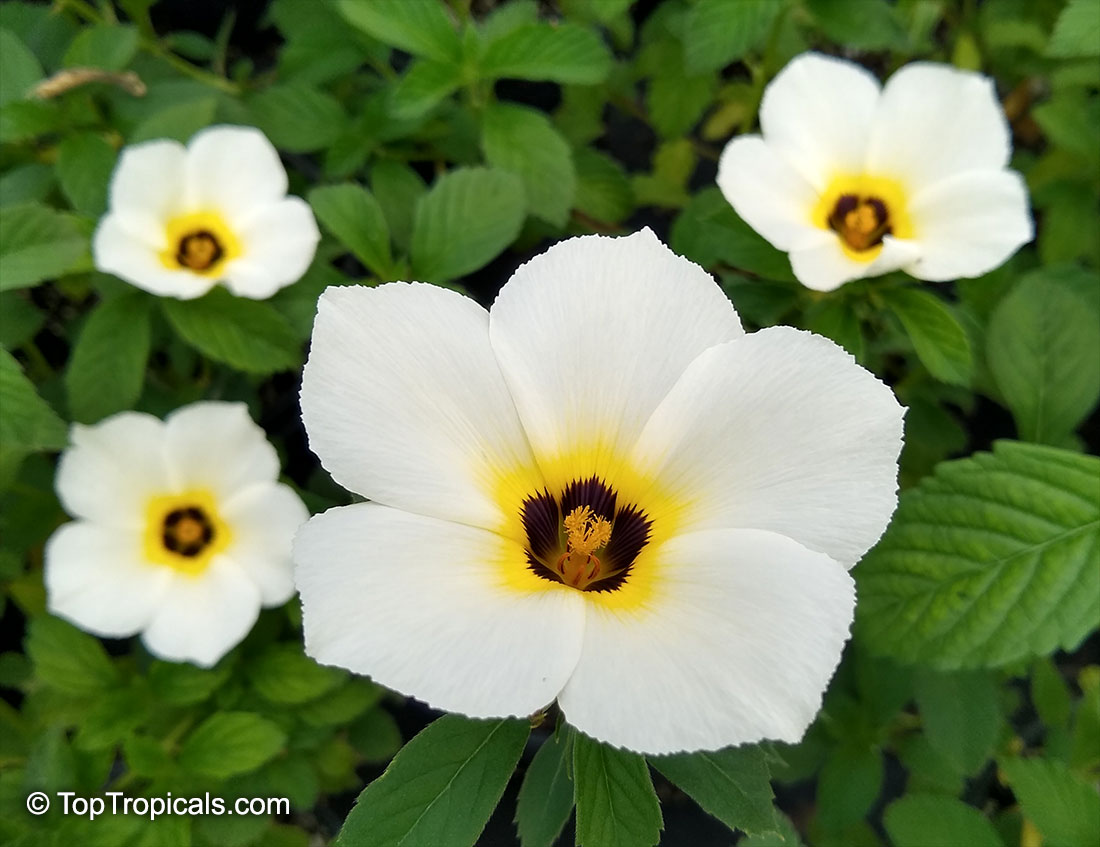
It is not only a nice evergreen ornamental, but also a highly valued medicinal plant. A tea made from its leaves is used in traditional medicine in South America and the West Indies to treat gastrointestinal problems, colds and flu, circulatory and dermatological issues. The plant contains essential oil, tannin and other active ingredients. Yet it is one of the more notorious herbal aphrodisiacs and has the reputation of being a superlative sexual tonic. Turnera is a mood-elevating aromatic herb that helps calm anxiety and induce a relaxed state of mind, considered especially useful when anxiety and depression are discouraging sexual arousal. It lends a delightful energy and flavor to wines and sundry other erotic potions...
In some states possessing, growing or selling this herb has been even against the law. For instance, in Louisiana it was outlaw as "anything that even remotely resembles synthetic marijuana, including all forms of damiana along with dozens of other purportedly and proven hallucinogenic plants".
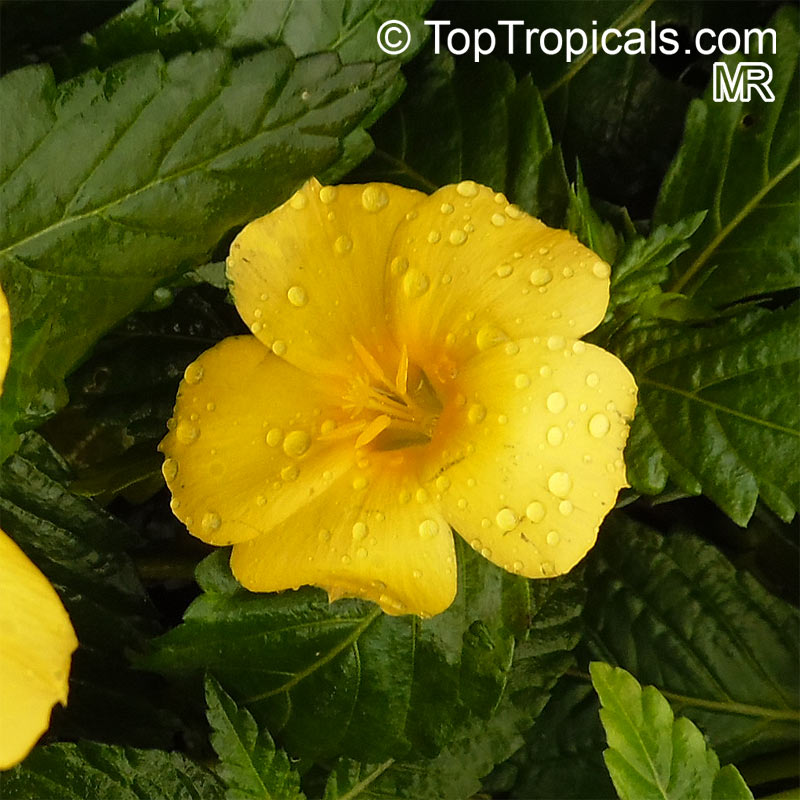
How to grow Turnera
Turnera ulmifolia has been frequently introduced to be used as an ornamental for its showy yellow flowers that blossom year around. Plants are also used as border plants and ground cover. This plant saving grace its attractive round form and the bright yellow flowers that bloom during the hottest parts of the summer. Turnera ulmifolia grows 2-3 ft tall at maturity and overwinters in USDA plant hardiness zones 9b through 11.
Turnera ulmifolia likes well-draining, fertile soil with full sun or light shade for the best results. It can tolerate almost all variations of sun exposure and different soils as long as they drain well, as well as salty air or water. If you are looking for a mass planting, space plants 18 inches apart; otherwise, plant single specimens 2-3ft apart.
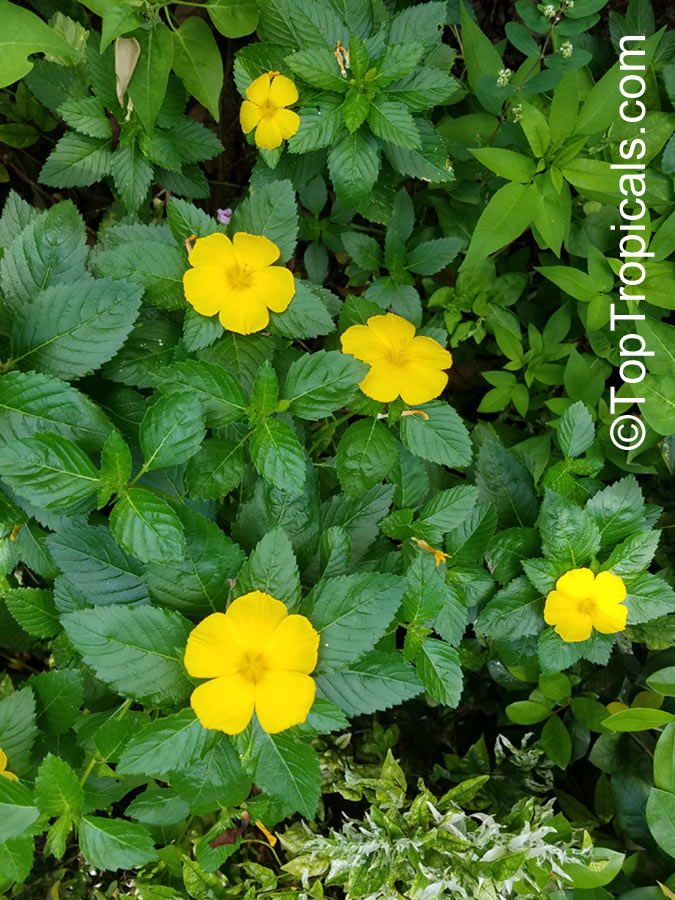
Keep the soil moist throughout the plant's first growing season. It should survive well on one inch of water per week, by rain or by hand, although it may require more in hot, dry weather. After the first growing season it is very drought-tolerant and only requires water during extended droughts of a month or more.
Prune in late winter or early spring, while the plant is not flowering, with sharp pruning shears, clipping back brown or overgrown branches to a leaf node within the canopy to maintain the shrubs rounded shape. This plant does not require pruning to flower or thrive, but it will make for a bushier and more attractive specimen if you do so.
Use SUNSHINE Megaflor - Bloom Booster for every watering. It formulated especially for blooms, to boost flowering, improve flower size and quality.Mix 25 ml with 1 gal of water. Can be used with every watering, year around. Compatible with other Sunshine Boosters. Do not mix with other concentrated fertilizers.


